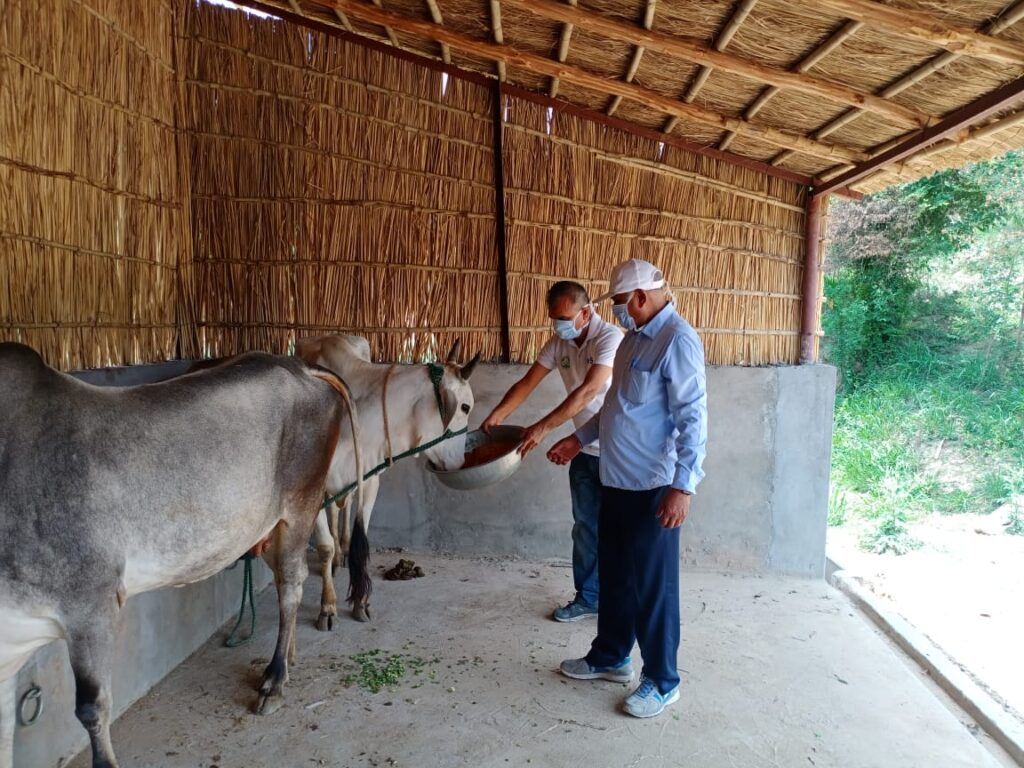Smart Sustainable Village with solar irrigation system: Smart Sustainable Village with solar irrigation system will be promoted in both states of Punjab and Haryana with active participation of Punjab and Haryana Energy Development Agency. One model village will be developed in SAS Nagar district of Punjab.

Training of farmer in solar application in irrigation: All 22 districts in both states will be covered in both states by identifying master trainers at district, block and village level. Farmers will be trained by master trainers so that they learn how to implement SPIS ,Water conservation, drip irrigation, natural farming and using cow dung to produce bio fertilizer. Solar ambassadors will identified from youth and women and Self helpgroups(SHGs) will be promoted at block/village level
Water Centre: Water table in both these states is going down alarmingly, A water centre will be established at Centre for Sustainable agriculture at model village in SAS Nagar district for promotion of SPIS, to promote rain water harvesting and other water table conservation techniques like multiple tips to supplement and reduce dependence on ground water.
Cowshed with solar panel on roof top: As a holistic model for sustainable agriculture, cowshed will be constructed on farmland at Centre for sustainable agriculture which will use solar panel for electricity. Solar shingles, also called photovoltaic shingles, are solar panels designed to look like and function as conventional roofing materials, such as asphalt shingle or slate, while also producing electricity. Solar shingles are a type of solar energy solution known as building-integrated photovoltaics (BIPV).
Soil fertility depletion is the single most important constraint to food security. Manure is an important input for maintaining and enhancing soil fertility. The application of cowdung manure and vermicompost increases soil organic matter content, and this leads to improved water infiltration and water holding ca-pacity as well as an increased cation exchange capacity. there is a positive relationships between relevant soil properties and enzyme activities and suggested that addition of organic matter increased microbial activity/ diversity and turnover, which subsequently leads to greater enzyme syn-thesis and accumulation in the soil matrix.

Cowdung and Environment:
The over-dependence on fossil fuels as primary energy source has led to myriads of problems such as global climatic change, environmental degradation and various human health problems (Aremu and Agarry, 2012). Global warming caused by energy generation from fossil fuel has accelerated the deployment of re-newable fuels such as biogas. Biogas is one of the renewable and sustainable alternative resources that significantly reduce green-house-gas emission compared to the emission of land gas to the atmosphere (Murphy et al., 2004). Biogas is produced by the anaerobic digestion or fermentation of such biodegradable materials as biomass, manure, sewage, municipal waste, green waste, plant material and crops (NNFCC, 2013). Biogas is also generated by converting cow manure via anaerobic digestion into methane biogas. One cow can produce enough manure in one day to generate three kilowatt hours of electricity whereas only 2.4 kilowatt hours of electricity is needed to power one hundred watt light bulb per one day (State Energy Conservation Ofce, 2009).
It also has the advantage of contributing to the solution of environmental problems, because it substitutes fossil fuels (Lora and Aandrade, 2009).
Excess solar energy to be sold to state grid: Excess electricity produced at centre will be sold to government by giving it back on state grid and generate income.
Live solar fencing of the farm: Farmers are always exposed to various external risks like weather dependence, market prices, inputs availability etc. Another potent risk for farming in hilly areas of Punjab and Haryana is damage to crops by stray/ wild animals which is common in Kandi and Morniarea of Punjab and Haryana respectively. The routine measures which are being taken in the State in crop protection from wild and stray animals are manually guarding the field and crop diversification Solar power fencing offers a number of benefits over conventional fencing as under: a. Human and Animal safety The electric shock is completely safe and non-lethal for human and animals. The animal / human touching the fence will keep himself away from the fence.
Green building/houses with exclusive solar energy: Besides SPIS, solar energy will be promoted for households:
In several Indian states like Punjab and Haryana, electricity for agriculture-related tasks is provided at no cost to farmers, usually at night, to ease off-peak daytime loads. This encourages the uncontrolled use of electric pumps, with farmers often leaving pumps running through the night, resulting in over irrigated farms and low ground water levels, not to mention all the wasted electricity. One could argue that, with solar power, the problem could get worse. Since solar power is abundant in India, farmers could feel even less obligated to monitor the use of solar pumps, leading to even lower groundwater levels.
Service Centre for solar pumps: Project envisions service contract model for solar pumps, where payments are made to the contractor depending on the amount of water delivered from the pumps. This can be monitored through inexpensive GPRS and remote sensing technologies. This business model can help put a price on the use of water and help maintain ground water levels if the government sets and enforces proper limits. The project is also looking at using solar pumps, small agro-mills and drying crops during non-irrigation season.
Extension Education of farmers for Cost effectiveness of SIPS: Here is how the costs break down—the upfront cost of a solar pump (say 5 HP, equivalent to irrigating 5 acres of land) is about 10 times that of a conventional pump, despite a significant reduction in solar module prices. Small and marginal farmers may not have the equity to buy solar pumps or the ability to raise debt from a commercial bank, since banks are still don’t consider solar pumps as “bankable technology.”